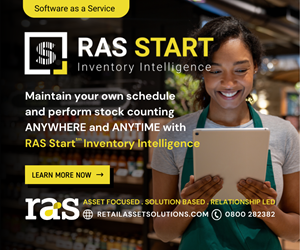industry focus
A US Perspective on Loss Prevention Leadership
Successful loss prevention executives must have a broad knowledge and skill base well beyond just understanding cameras, tags, investigations, and other loss prevention tactics. They must have strong retail business acumen as well as effective people leadership skills. I suspect this is true whether one is leading an asset protection organisation in the US or a profit protection team in Europe.
Two recent articles in the US magazine by two accomplished loss prevention leaders offered interesting insights on the subject that the LP Magazine EU team felt would be of interest to the readership here. Following are excerpts from the two articles.
How Do Successful LP Leaders Lower Shrink? By Leading.
By Brent Onan
Onan is a seventeen-year veteran of loss prevention. He was a director of LP at Nordstrom, prior to which he served at Old Navy. Onan is currently vice president of sales at USS, a role he's had for the past two years.
Thieves are not the only ones who impact shrink. In fact, they may not even be the biggest factor in a store's overall shrinkage. The most important lesson I learned in my seventeen years in loss prevention is that what shrink depends on the most is the store culture created and maintained by the store leader. A responsible leader who coaches and develops people, who addresses issues in a timely manner, and who leads by example will instill the sense of ownership in his or her employees. The result is a store environment that fosters higher sales and lower losses.
Anyone with a basic knowledge of loss prevention knows that shrink comes from three sources; process errors, internal theft, and external theft. A responsible leader can impact employees' decisions in all three of those areas. Here are some specific examples that I have witnessed firsthand.
Lowering External Theft through Better Customer Service
I recently visited a customer's store in Yulee, Florida. Within thirty seconds of walking in, I was greeted by an associate at the register, an associate in the accessories department, and the manager on duty. I was duly impressed. I remember thinking that to an honest customer, that's one welcoming and attentive store, but to a thief, what an intimidating environment. And for the store, it's a win-win.
Thieves don#t like attention. They don't want to be remembered and recognised. So for external theft, the ultimate deterrent is great customer service. From this it follows that the LP leader's first job is training the store employees to respond in the right way when they see a person walking in. This training is best done outside the classroom in the store environment, working side-by-side. As the leader sets the example, the employees tend to follow. This is how a positive store culture begins to be established.
Great customer service does not just deter theft, of course; it also keeps good customers coming back to shop more. So this is a double-edged sword in a good way - less shrink and more sales equals more profit. By focusing on customer service, the LP leader serves a dual role - preventing loss and enabling sales. Unfortunately, some companies tend to focus on cutting costs so much that they also cut labour, leaving stores understaffed or without sufficient training. This can be short-sighted, I believe, because with fewer staff the customer service inevitably suffers as well.
Preventing Internal Theft by Setting a Personal Example
In my early days in loss prevention, one of my mentors taught me an important lesson. A small percentage of people we encounter, he would say, are inclined to do bad things, and no one will change them. Another small percentage of people would never steal under any circumstances - they are just built that way. The rest - the majority - we can influence one way or the other. And here is, perhaps, the most wide-reaching way the LP leader can impact his or her organisation.
An employee's decision to steal from the company, whether it's to take cash, pass merchandise to a friend, or participate in refund fraud, is often tied to how he or she perceives the store and the company. Does the employee think he or she is treated unfairly by the management? That the company does not care? That the store is disorganised, so no one will notice funny business? Does the employee see the manager break rules, take shortcuts, waste resources, or behave in a questionable manner? The yes-answer to any of these questions can tip the employee's attitude in the wrong direction, and he or she may do something dishonest should the opportunity arise.
From all this it follows that the leader's job is two-fold when it comes to internal theft. First, the leader must behave in the way he or she expects the employees to behave. Nothing new there - this is the Golden Rule that's been in the books since there were books. And second, the leader must foster the culture of open and honest conversation within the organisation, starting with himself or herself. Employees must feel empowered to take action when they notice something amiss. They should also feel confident that when they bring something to the manager's attention, the manager will take appropriate action while protecting the whistle-blower's identity when needed and possible.
Reducing Process Errors by Active Involvement
A seasoned LP professional can tell a lot about a store's likelihood to have a high shrink level by simple observation. Are employees smiling? Are they offering assistance or standing behind the counter on their cell phones? Is the store organised, clean, and clutter-free? Are the fixtures dusted? The store does not need to be perfect - it's retail after all - and merchandise does not stay in its place for too long. But it should be apparent that everyone from the top down cares and has a sense of ownership.
Sloppiness in the general look of the store usually betrays sloppiness in all other aspects of the store's operation. Take for example re-ticketing errors: a customer brings an item with no price tag to the register. If the employee doesn't know that the store is supposed to be neat and organised, will he or she know the process for finding the right price? And will such an employee care enough to follow the process or just make up the price on the go? Sloppiness impacts shrink especially in shoe departments - shoes get split up, and you end up with a bunch of boxes with just one shoe in each. There go your sales. Profit erosion from sloppiness is also evident in buy-X-get-one-free promotions. Free does not mean don't ring one up.
To combat shrink from process errors, an LP leader should be engaged every single day - not just checking boxes off the clipboard, but really engaged with the daily operations and with each employee. My favourite slogan for many years has been this - see it, say it, do it. One of the best practices I've witnessed many times over my career is watching a leader roll up the sleeves and do something that isn't pleasant. Truck late? The leader rolls up the sleeves and helps unload it. Bathroom seen a better day, but associates are busy? The leader grabs a mop and cleans it personally. When you show that you are not above those tasks, people recognise that. In fact, you often don't have to say anything - people recognise when they see you set an example.
Developing Future Leaders
The LP leaders that I have observed to have the biggest impact on shrink are those who do all of the above, plus take the time to develop more leaders. This makes perfect sense since one person can only do so much, but a whole team of like-minded people, spread throughout the organisation, can accelerate company performance - exponentially.
How does one start to develop people? I noticed that it's the small things that can make a big difference, for example being there to greet the new folks on their first day, having the training plan ready before they show up for work, and working with employees side-by-side and setting a positive example. At the same time, it is important to encourage employees to navigate on their own. Allow them to make mistakes and then coach through the process.
My mentor from my first LP job is still with the company, still excelling at his work. But even more importantly, he developed and placed more than a dozen excellent people in leadership positions throughout the organisation. Some of his proteges have gone to other companies where they are making a positive impact thanks to the culture they've lived under. We used to call this the tree with many branches. And it's a wonderful tree - one that delivers results for the organisation, helps people better themselves, and one day leaves a legacy of excellence behind.
Developing Your Own Loss Prevention Professional Brand
By Kevin J. Thomas, CFE, CFI, CBCP
Thomas is the director of loss prevention and risk management for the PGA TOUR Superstores. Prior to joining the PGA TOUR Superstores, he managed the loss prevention programs at Columbia Sportswear and RaceTracÊPetroleum.
The loss prevention profession has undergone dramatic changes recently in regard to the skill set needed to be successful within the retail industry today. The historic experience level has taken a paradigm shift from possessing an extensive law enforcement background to being viewed as a retail professional that can collaborate well with key internal stakeholders and build support in order to protect company assets while increasing profitability.
Collaboration and salesmanship in my eyes have moved to the forefront of competencies required specifically for any LP professional expecting to maintain a successful career in the industry. As a result, industry practitioners now must be able to sell programs, solutions, and strategies that benefit the entire business, including sales and growth, profitability, customer experience, payroll, and brand protection.
In the 1970s and 1980s, service in local, state, and federal law enforcement was the required foundational experience for most loss prevention leaders. Today the ability to collaborate with business partners has become the most important competency. The retail industry has begun to require loss prevention professionals to be more diversified in their skill sets as opposed to being considered too one-dimensional by today's standards. As theft scenarios and policies involving such will remain, the strategies to address such must take into consideration the exposure liability and the impact on the greater customer base that drives sales. Loss prevention programs and solutions must strive to remain seamless and transparent to the internal and external customer base.
During a recent conversation with a young industry professional, I was asked, "How does an LP professional establish his or her own professional brand?" My response focused around two fundamental components:
Providing "WOW" customer service and continual professional development.
Providing "WOW" Customer Service
The first means delivering outstanding customer service to the various business units that LP traditionally supports, including finance, inventory accounting, operations, and human resources. Customer service is not only answering your phone and responding to emails but also meeting much higher expectations. As the book "Raving Fans" by co-authors Ken Blanchard and Sheldon Bowles indicates, there are three key principles that are pertinent to delivering a "WOW" customer service experience within any professional environment.
The first step is deciding what you want as your customer service model - how you want to be perceived by your executive leaders, internal peers, and business stakeholders. This not only impacts you as a leader but also resonates with the team you manage on a daily basis. Establish an individual and team presence within the organisation that breeds collaboration as opposed to divisiveness. Focus on coalition versus silos, partnership not individualism. Distinguishing your customer service model definitely creates a communication segue to drive your department and team's overall philosophy and ability to heighten awareness throughout your organisation.
The second step to delivering this customer service concept is studying and analysing your customer needs from a business support perspective. As with any new product launch, there's a phase wherein the consumers' needs are evaluated to ensure their needs are being addressed. Hence, you should test your customer service model constantly by obtaining feedback from your internal and external stakeholders to incorporate modifications to your vision as needed to be effective. No plan or blueprint to success works without changes being made throughout your professional journey. As internal and external business stakeholder needs change, you as a professional must be adaptive in order to support these changes as well. The leader must anticipate these environmental changes and consider altering his or her three-, five-, or ten-year plan in order to remain aligned with the overall goals of the organisation. As business strategies and visions are shared internally, the leader must listen carefully and evaluate existing programs for the need to initiate changes required to optimise success.
Lastly, the third step of creating a "WOW" customer service support model is delivering your vision plus one percent. In order to generate a raving fan, one must exceed every internal customer's expectations on an ongoing basis, delivering a service to him or her that goes beyond the call of duty and creates a perception of consistency, which builds credibility. This will require a 360-degree evaluation of your customer service philosophy and avoiding complacency with respect to meeting your internal customer needs. To provide this level of consistency, your "WOW" customer service model will need systems, training, and alignment with the corporation's goals.
Continual Professional Development
The second fundamental component of establishing your personal loss prevention brand is continual professional development. Being a frequent reader of leadership and self-help books, I often refer back to a quote by Rick Warren in his book - The Purpose Driven Life. He states, "The moment you stop learning, you stop leading." My father ingrained this philosophy in me since my childhood.
Continual development doesn't always include pursuing advanced collegiate degrees and certifications. However, it does take an unwavering passion to always work on your foundation as a professional in an effort to improve your skills as a leader. This can be achieved by identifying leadership publications by authors such as Jim Collins, Franklin Covey, Peter Drucker, and my personal favourite, John Maxwell. All of these authors provide unique methods of establishing leadership characteristics within yourself, which directly impacts your professional brand. Professional development has become a daily quest for me as a loss prevention practitioner within the retail environment.
I'm often reminded that establishing a professional brand correlates closely with becoming a person of influence. You must first connect with people, empower others, and reproduce other influencers. This evolutionary process doesn't transpire overnight. Loss prevention professionals must learn to create a sustainable personal brand that others desire to emulate and carry on long after you have parted ways. Establishing a loss prevention brand isn't the easiest.
My guidance to this beginning LP executive was development of both a "WOW" customer service model and a continual professional development plan. This allows loss prevention professionals in the industry to create a set of positive attributes and characteristics associated with themselves throughout their journey in the industry.






